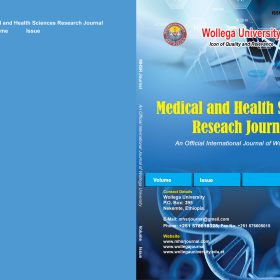The Congenital Epulis in a 24-hour-old female neonate: A Case Report
Congenital Epulis in 24-hour-old female neonate
DOI:
https://doi.org/10.20372/mhsr.v1i2.1639Keywords:
Congenital Epulis, NeonateAbstract
Background Congenital epulis is an extremely rare tumour of the oral cavity. If not treated appropriately with surgery, it can lead to mechanical obstruction, resulting in feeding difficulty and respiratory failure during neonatal life. Neonates with congenital epulis usually presents with mass protruding from the mouth, difficulty of breast sucking and difficulty of breathing. Diagnosis is usually suspected clinically and can be confirmed by histopathological examination of tissue excised from the mass. Multidisciplinary team management with surgical removal of the tumour is the main treatment option, and the outcome is usually excellent. Case Presentation
We present a very rare case of congenital epulis in a 24-hour-old female neonate after presenting with a big protruding mass from the oral cavity, resulting in feeding difficulty. The histopathological examination revealed an upper alveolar ridge granular cell tumour, and the tumour was removed by surgery. After a few hours of surgery, the neonate was able to feed without any difficulty and was discharged in good condition after 3 days of observation.
Conclusion Even though a begnin tumour, congenital epulis can lead to feeding difficulty by obstructing the oral cavity. With the appropriate multidisciplinary management, it can be corrected with a very good outcome.Downloads
References
Babu E, Kamalasanan G, Prathima G, Kavitha M. Congenital epulis of the newborn: a case report
and literature review. International Journal of Clinical Pediatric Dentistry. 2021;14(6):833.
Eghbalian F, Monsef A. Congenital epulis in the newborn, review of the literature and a case report.
Journal of pediatric hematology/oncology. 2009;31(3):198-9.
Vered M, Dobriyan A, Buchner A. Congenital granular cell epulis presents an
immunohistochemical profile that distinguishes it from the granular cell tumor of the adult.
Virchows Archiv. 2009;454:303-10.
Lapid O, Shaco-Levy R, Krieger Y, Kachko L, Sagi A. Congenital epulis. Pediatrics.
;107(2):e22-e.
Aparna H, Jayanth B, Shashidara R, Jaishankar P. Congenital epulis in a newborn: a case report, immunoprofiling and review of literature. Ethiopian Journal of Health Sciences. 2014;24(4):359-62.
Uǧraš S, Demírtaš Í, Bekerecioǧlu M, Kutluhan A, Karakök M, Peker Ö. Immunohistochemical study on histogenesis of congenital epulis and review of the literature. Pathology international. 1997;47(9):627-32.
Jain N, Sinha P, Singh L. Large congenital epulis in a newborn: diagnosis and management. Ear, Nose & Throat Journal. 2020;99(7):NP79-NP81.
Merrett S, Crawford P. Congenital epulis of the newborn: a case report. International Journal of Paediatric Dentistry. 2003;13(2):127-9.
Küpers AM, Andriessen P, van Kempen MJ, van der Tol IG, Baart JA, Dumans AG, et al. Congenital epulis of the jaw: a series of five cases and review of literature. Pediatric surgery international. 2009;25:207-10.
Kayiran SM, Buyukunal C, Ince U, Gürakan B. Congenital epulis of the tongue: A case report and review of the literature. JRSM Short Reports. 2011;2(7):1-3.
Kumar RM, Bavle RM, Umashankar D, Sharma R. Congenital epulis of the newborn. Journal of Oral and Maxillofacial Pathology. 2015;19(3):407.
Kannan S, Rajesh R. Congenital epulis-congenital granular cell lesion: a case report. Journal of Indian society of pedodontics and preventive dentistry. 2006;24(2):104-6.
Downloads
Published
How to Cite
License
Copyright (c) 2024 Medical and Health Sciences Research JournalJournal

This work is licensed under a Creative Commons Attribution-NonCommercial 4.0 International License.
Medical and Health Sciences Research Journal,
MHSR © 2023 Copyright; All rights reserved





